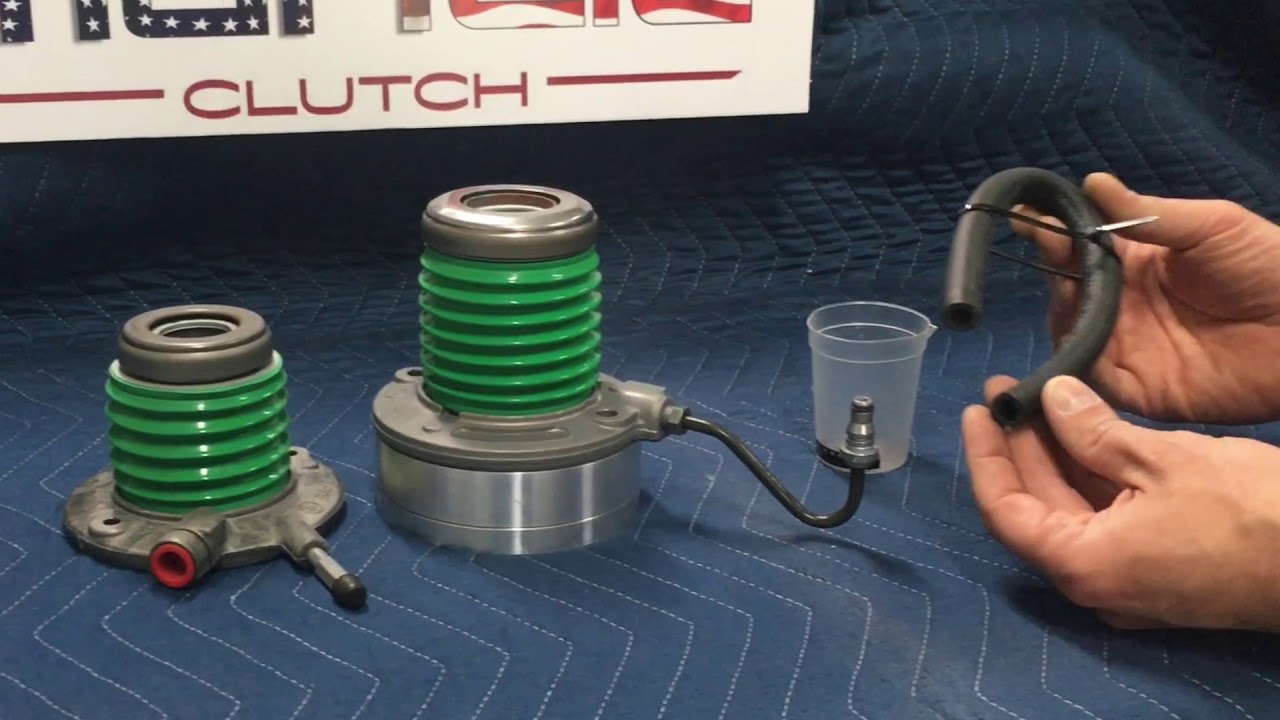Let’s discuss the question: how to bleed hydraulic throwout bearing. We summarize all relevant answers in section Q&A of website Achievetampabay.org in category: Blog Finance. See more related questions in the comments below.

What is the best way to bleed a hydraulic clutch?
The easiest way to bleed the clutch is to use a vacuum pump to pull the fluid and air out of the system while keeping the clutch fluid reservoir topped off. Continue pumping fluid from the bleeder valve until you no longer see air bubbles in the fluid.
How do you bleed a hydraulic clutch by yourself?
- Step 1: Gather Your Tools and Lift the Car. Jack up your car so you can access the clutch. …
- Step 2: Open the Master Cylinder. …
- Step 3: Bleed the Clutch. …
- Step 4: Repressurize and Bleed Again. …
- Step 5: Clean Up and Test.
How To: Bleed a Hydraulic Throwout Bearing – Mantic Clutch USA
Images related to the topicHow To: Bleed a Hydraulic Throwout Bearing – Mantic Clutch USA

How do you bleed a hydraulic clutch master cylinder?
- 1) Prepare to Bleed the System.
- 2) Open the Bleeder Valve and Purge Air.
- 3) Close the Bleeder Valve.
- 4) Repeat Until No Air Remains.
- 5) Top Off Clutch Fluid Reservoir.
- 6) Test Clutch Pedal.
- 7) Clean Up.
How do you bleed a McLeod hydraulic throwout bearing?
Fill, open the bleeder, press the pedal and hold for a sec, close bleeder, let site for a few seconds, repeat. That’s how I’ve bleed my McLeod TO bearing. pretty easy.
How do I get air out of my clutch?
Use a hand-operated vacuum pump to bleed a clutch
Remove air bubbles from the slave cylinder – Open the bleeder valve and use the vacuum pump to suck the air bubbles from the slave cylinder. Remember to keep an eye on the fluid level while you are doing this.
How to Bleed a internal Hydraulic Bearing
Images related to the topicHow to Bleed a internal Hydraulic Bearing

How do you bleed a clutch with no pressure?
- Fill reservoir,
- Depress clutch pedal (person 2 or use a bar to block pedal down)
- Open bleed valve, close as soon as pressure goes, ( a pipe into a jar is good to keep area clean)
- Release pedal, wait 3 seconds then depress and hold again.
- Repeat 3 and 4 as necessary untill you have a decent pedal.
How do you manually bleed a clutch?
- Jack up the front of the car.
- Open the hood.
- Remove the cap from the clutch fluid reservoir. …
- Screw the pressure bleeder onto the top of the reservoir.
- Pump the clutch a few times.
- If using a power bleeder, watch the gauge and pump it to a PSI of about 12.
How can you tell if there’s air in your clutch?
If your clutch pedal feels soft or ‘spongy’ at any point as you press it to the floor, it’s a sign your clutch fluid is low. That spongy, inconsistent feeling is due to air in the clutch line from the master cylinder to the slave cylinder.
How do you bleed a hydraulic clutch without a bleeder valve?
- Push the slave cylinder pushrod inward and disconnect both bands of the retaining strap to enable the pushrod to fully extend. …
- Tilt the slave cylinder to a 45° angle. …
- Insert the master cylinder line into the slave cylinder port.
HOW TO BLEED A CLUTCH BY YOURSELF
Images related to the topicHOW TO BLEED A CLUTCH BY YOURSELF

How does air get into clutch system?
Air is sucked into the clutch slave cylinder, thru the cup seal. I know it sounds hard to believe, but the cup’s lip faces inward only with every slave cylinder I’ve been inside. The explanation I remember was that it is most likely to occur when the clutch pedal is fully depressed, and then released quickly.
How does a hydraulic clutch throwout bearing work?
The “throw-out bearing” is the heart of clutch operation. When the clutch pedal is depressed, the throw-out bearing moves toward the flywheel, pushing in the pressure plate’s release fingers and moving the pressure plate fingers or levers against pressure plate spring force.
Related searches
- ford t5 hydraulic throwout bearing
- how to bleed howe throwout bearing
- how to bleed throw out bearing
- mcleod hydraulic throwout bearing install
- quartermaster throw out bearing installation instructions
- how to bleed a clutch
- hydraulic throwout bearing muncie 4 speed
- gm hydraulic throwout bearing
- gm hydraulic throwout bearing bleeding
- how to bleed a hydraulic clutch by yourself
- how to bleed a hydraulic release bearing
- how does a hydraulic throwout bearing work
- how to bleed nv3500 clutch
Information related to the topic how to bleed hydraulic throwout bearing
Here are the search results of the thread how to bleed hydraulic throwout bearing from Bing. You can read more if you want.
You have just come across an article on the topic how to bleed hydraulic throwout bearing. If you found this article useful, please share it. Thank you very much.

